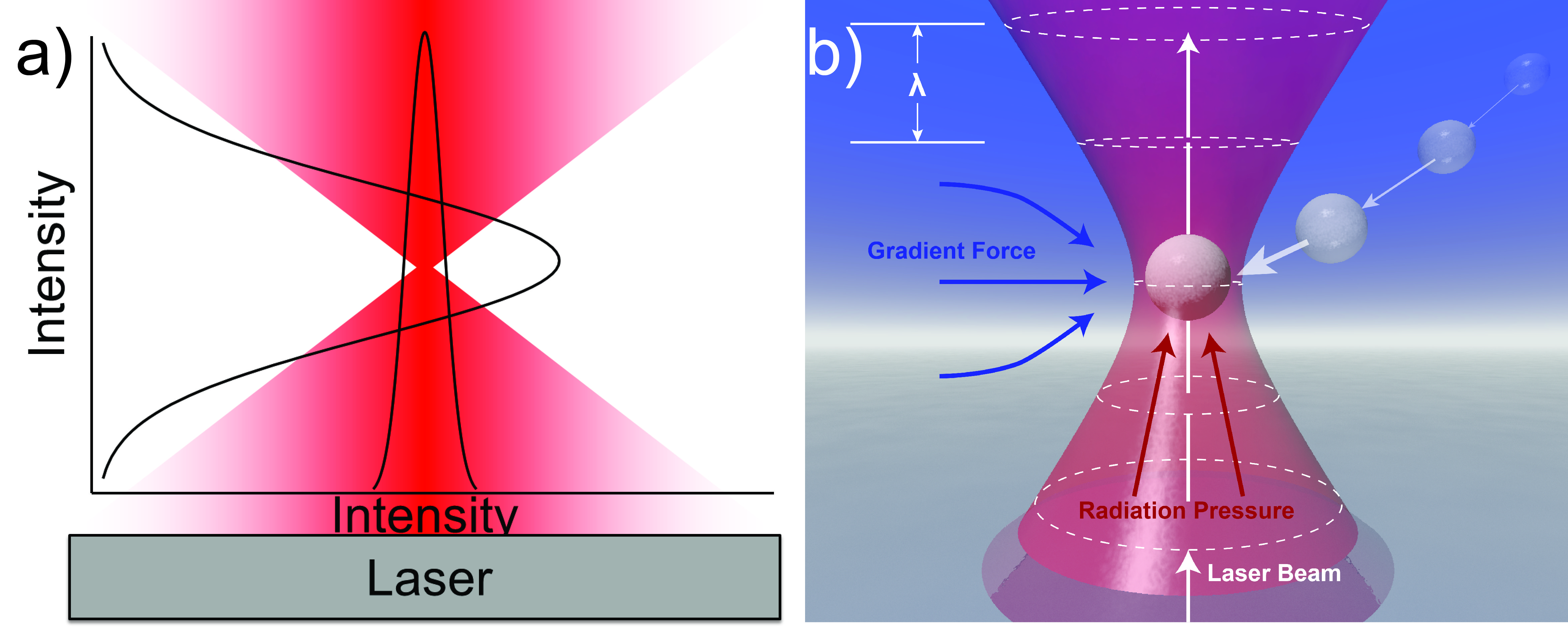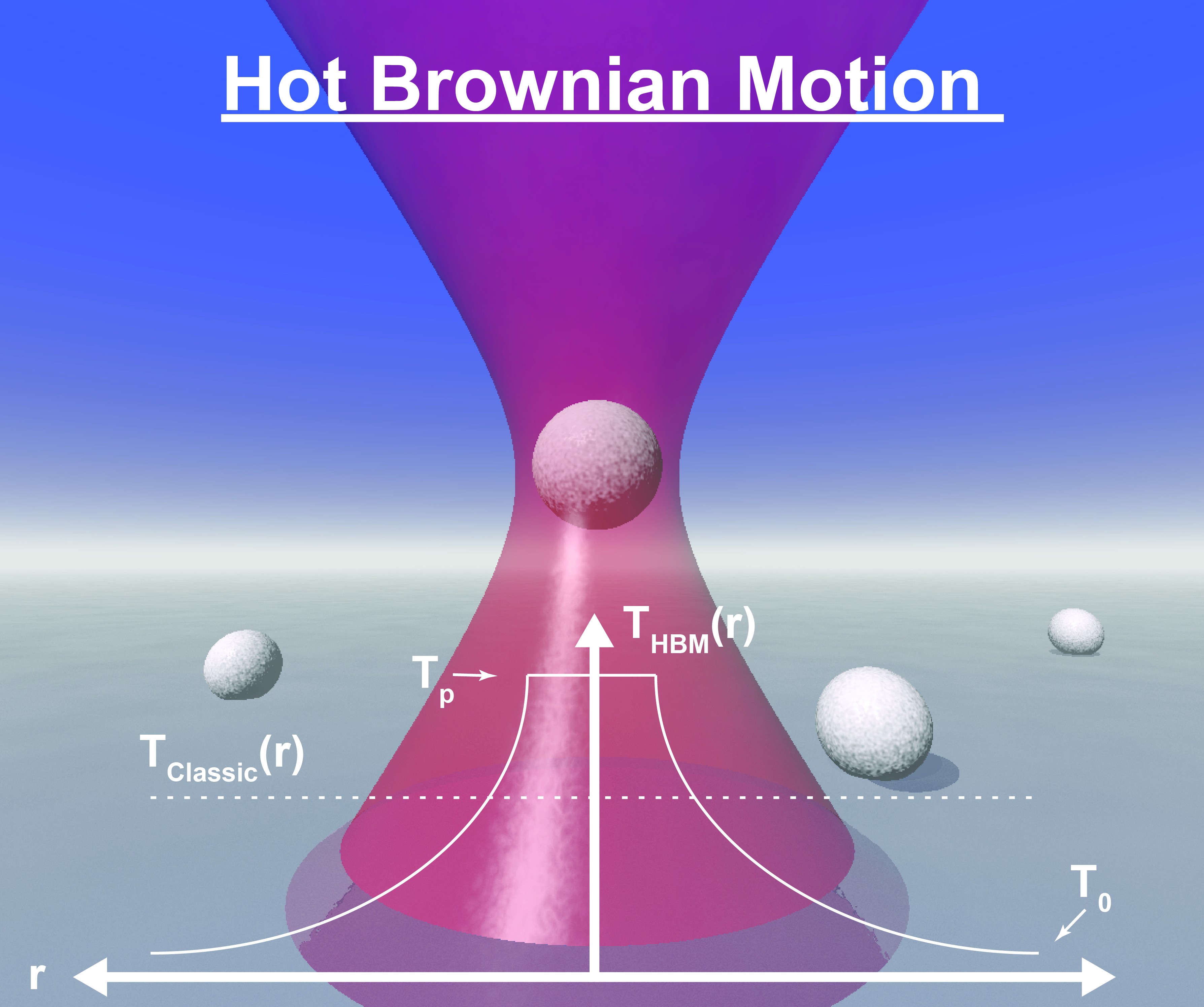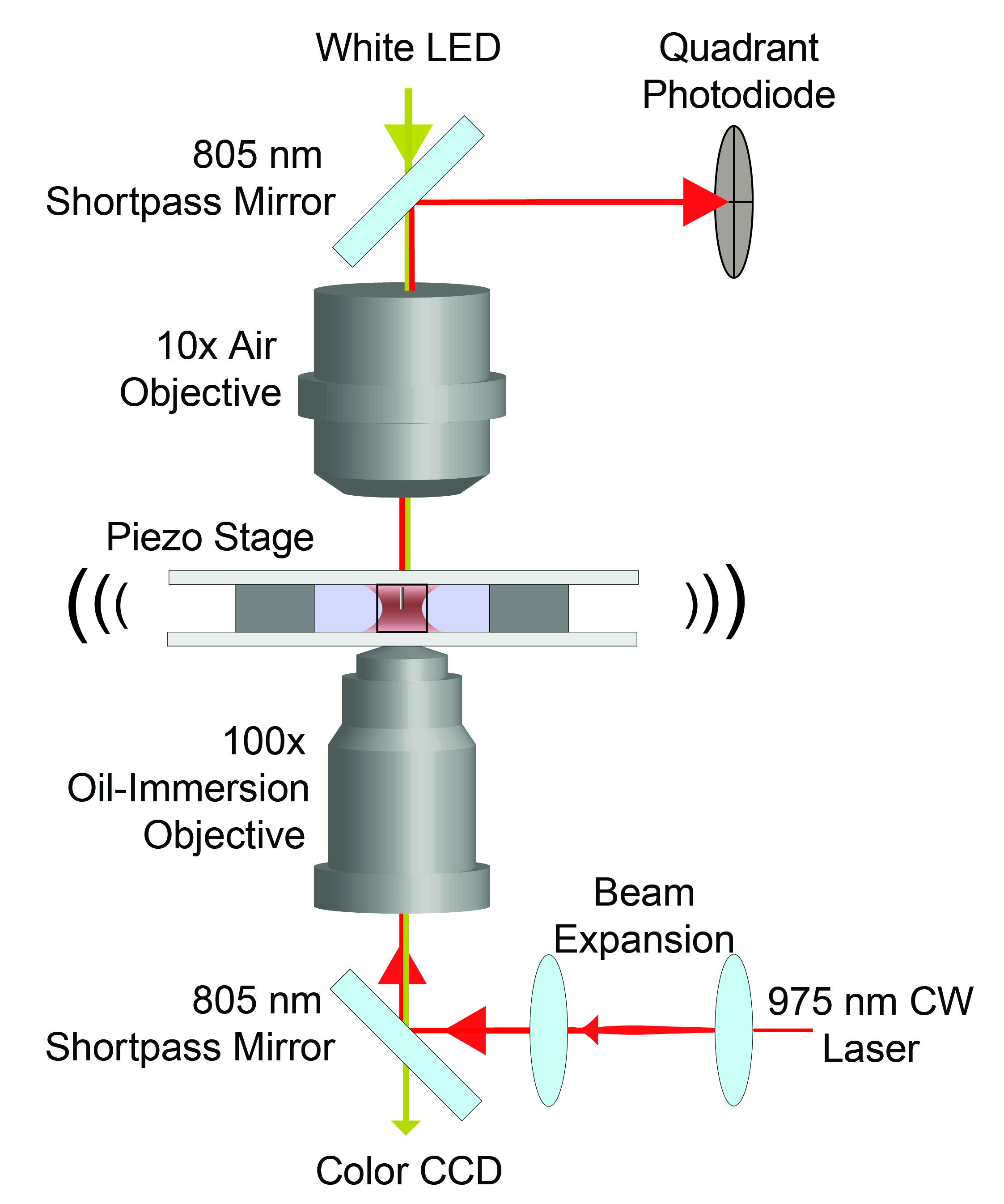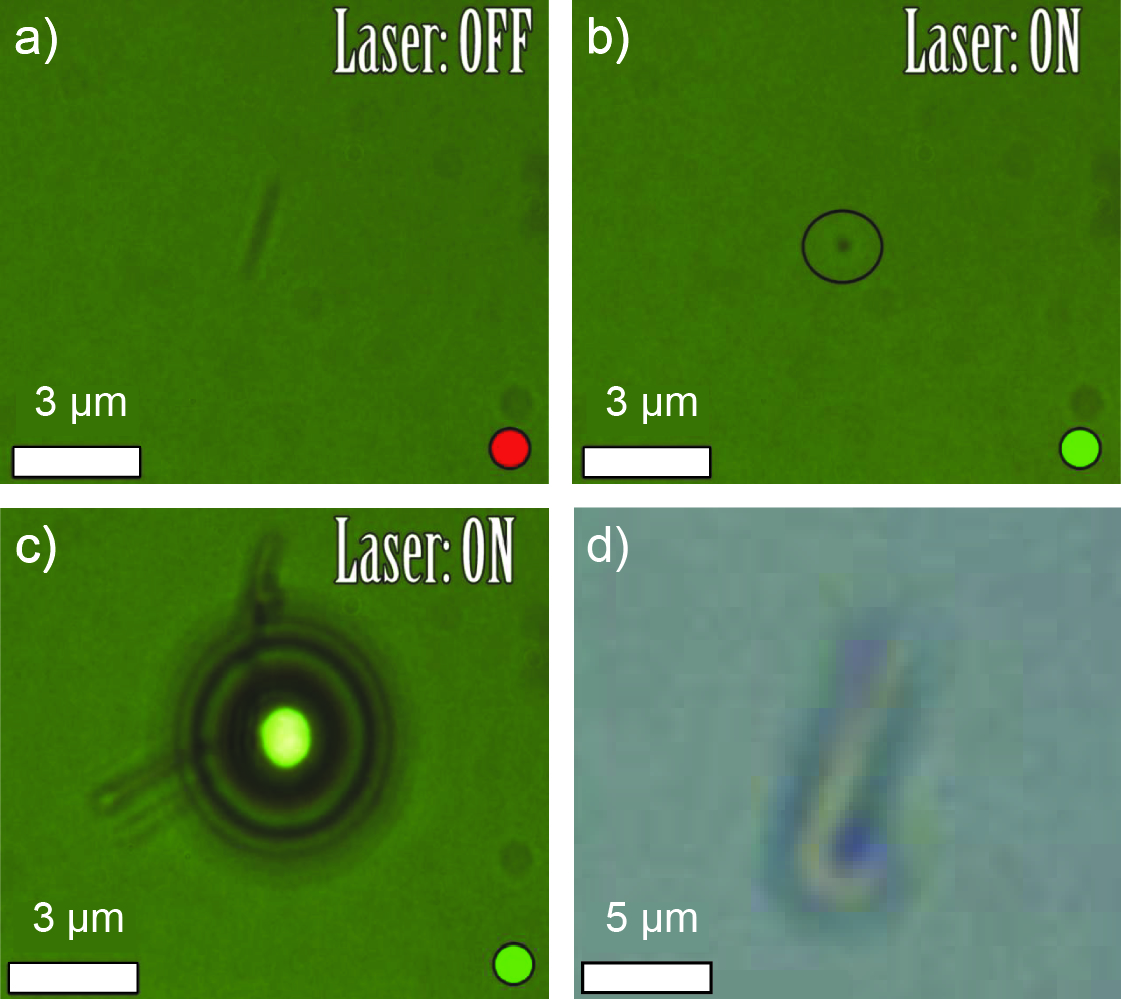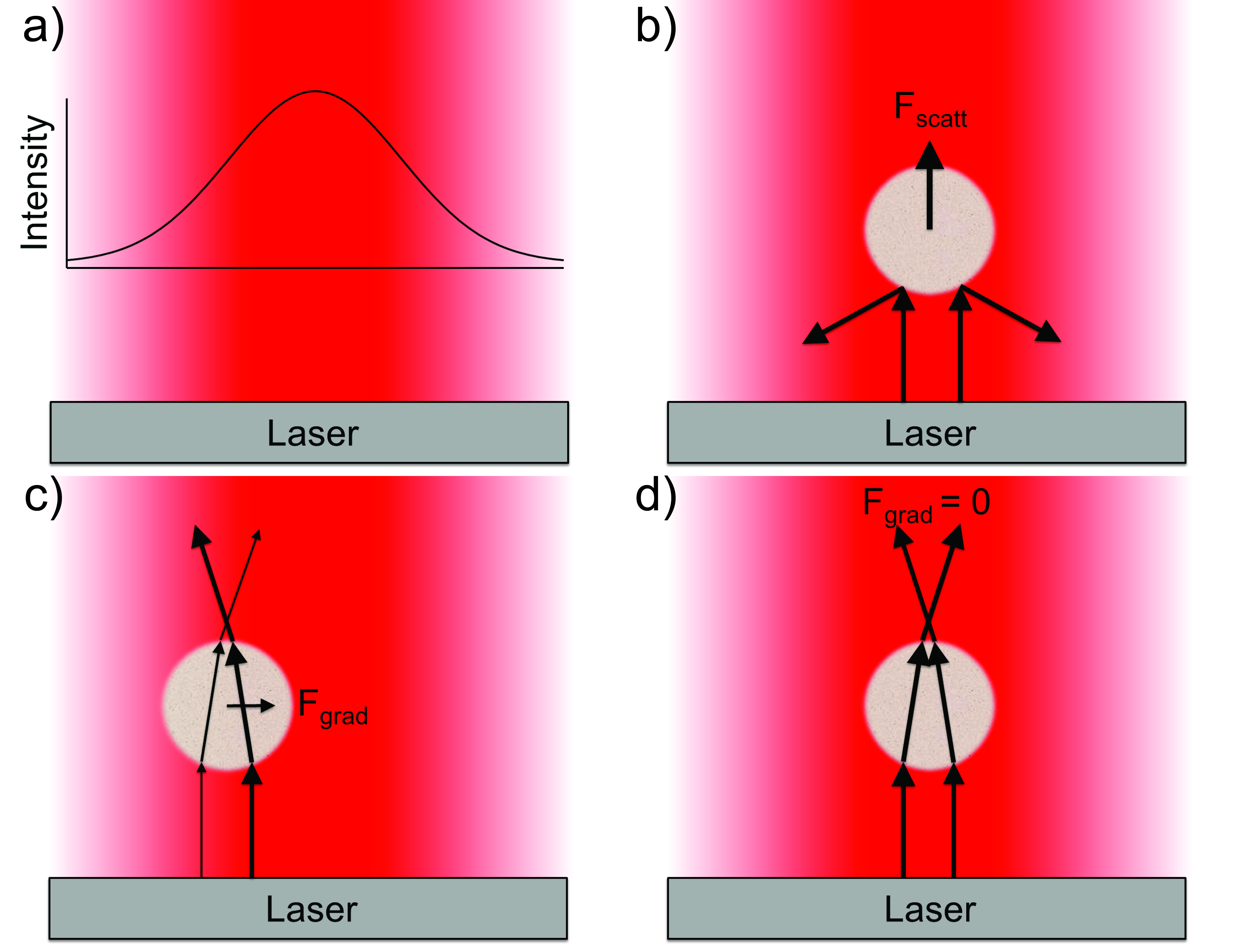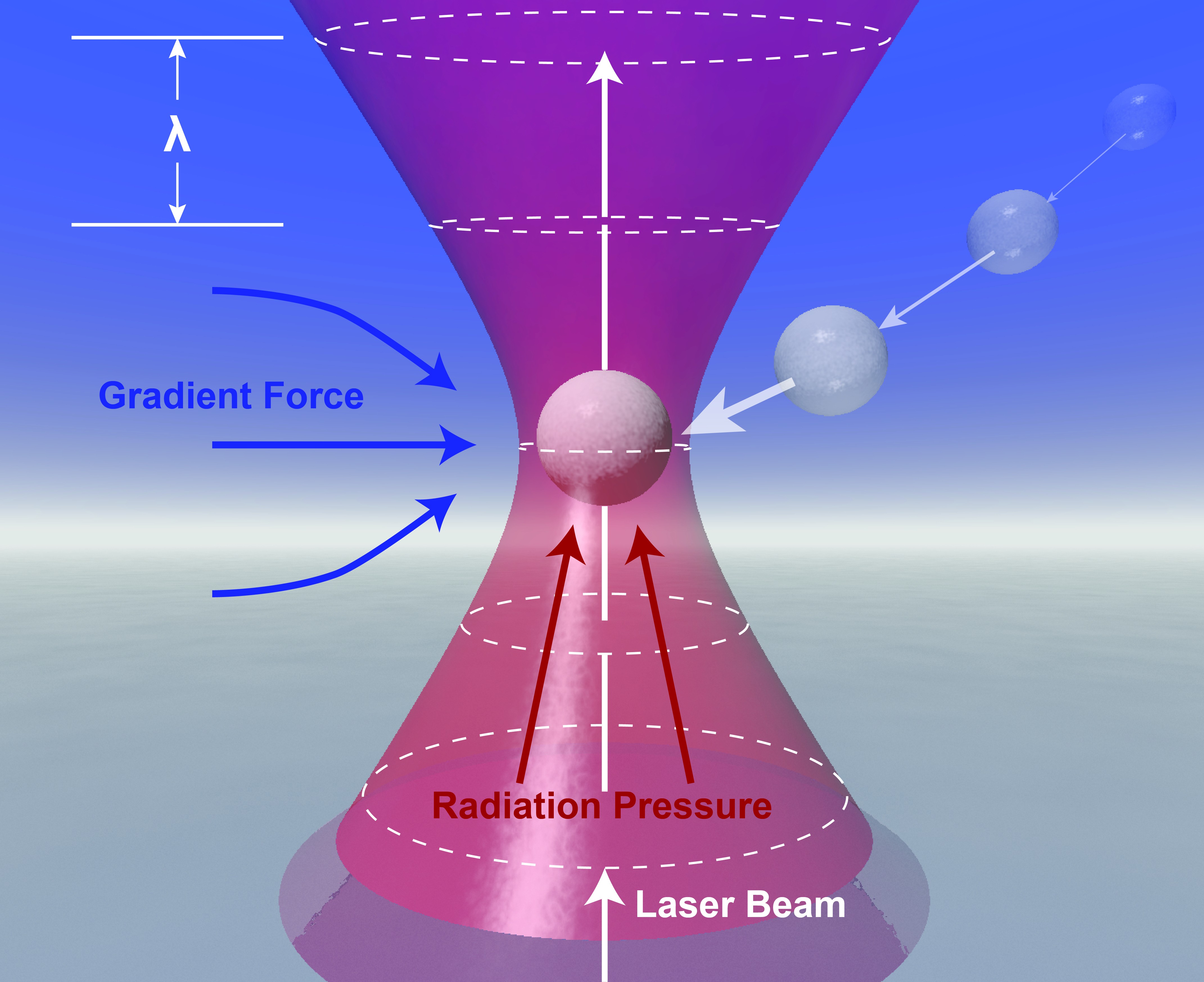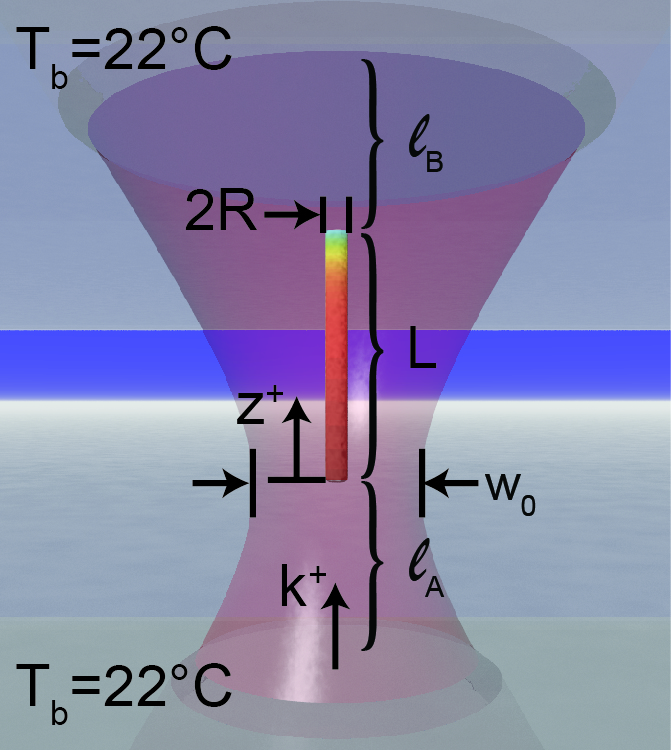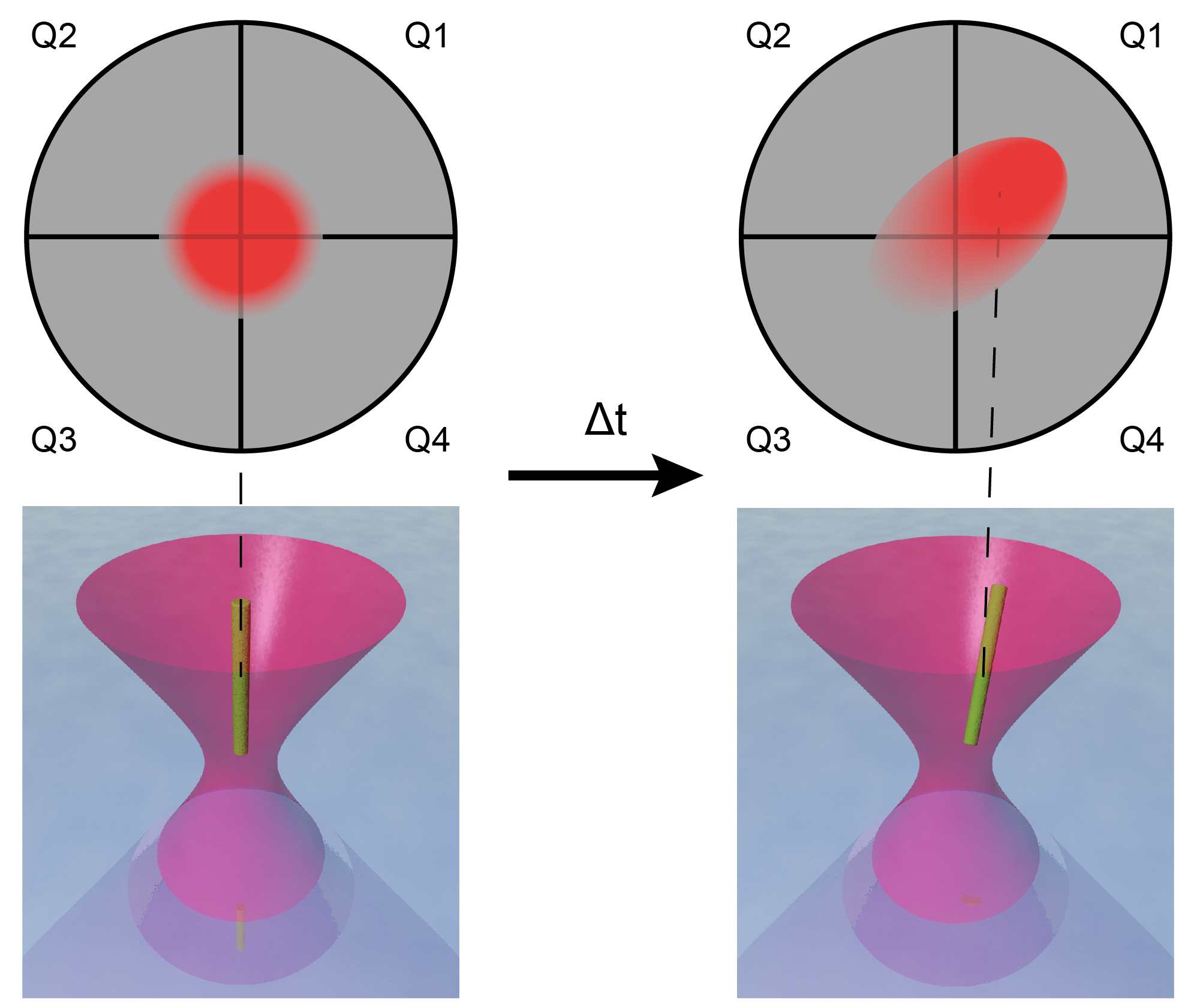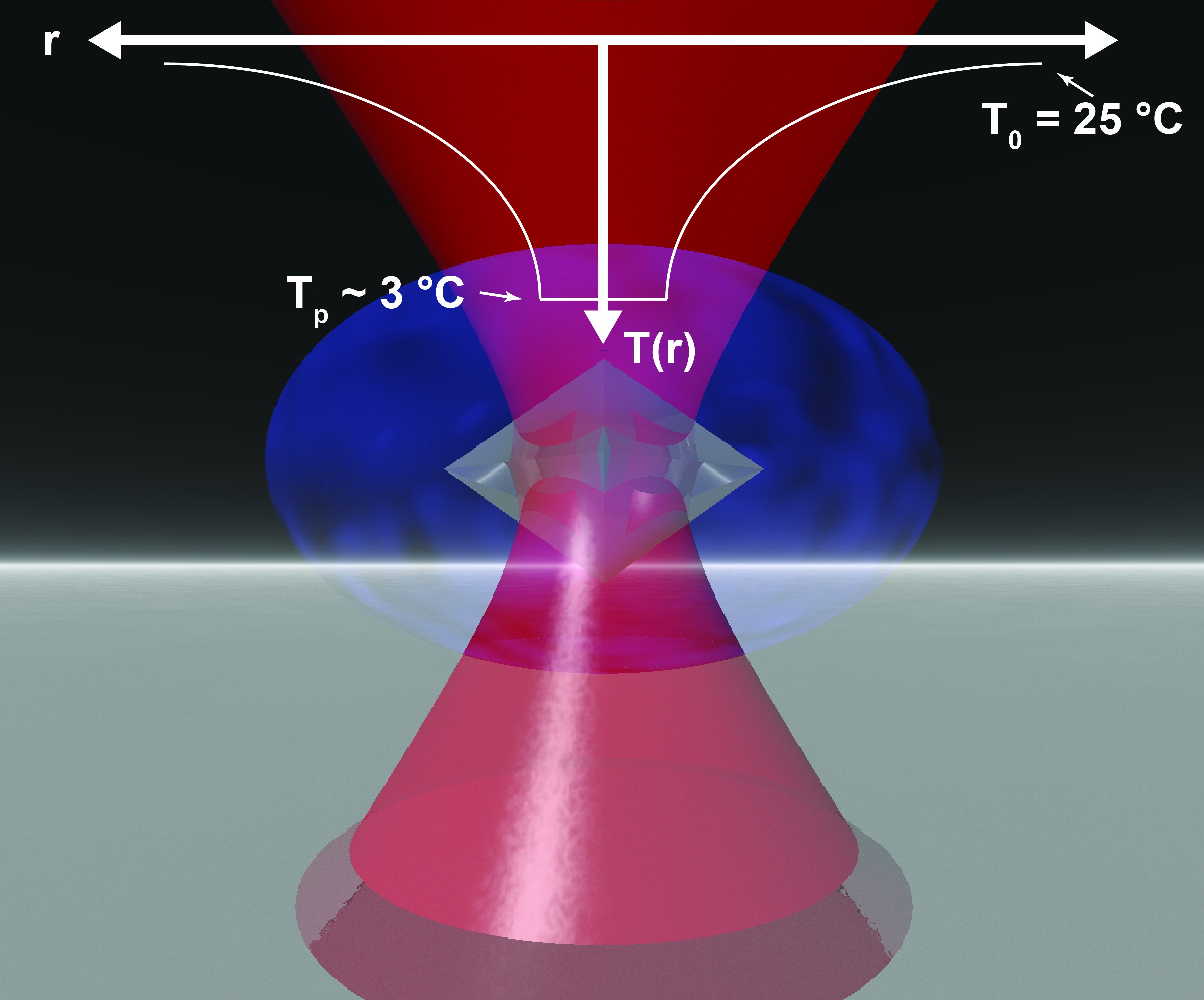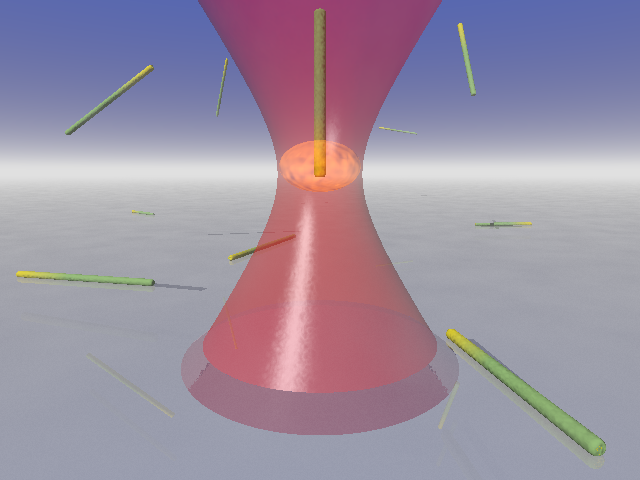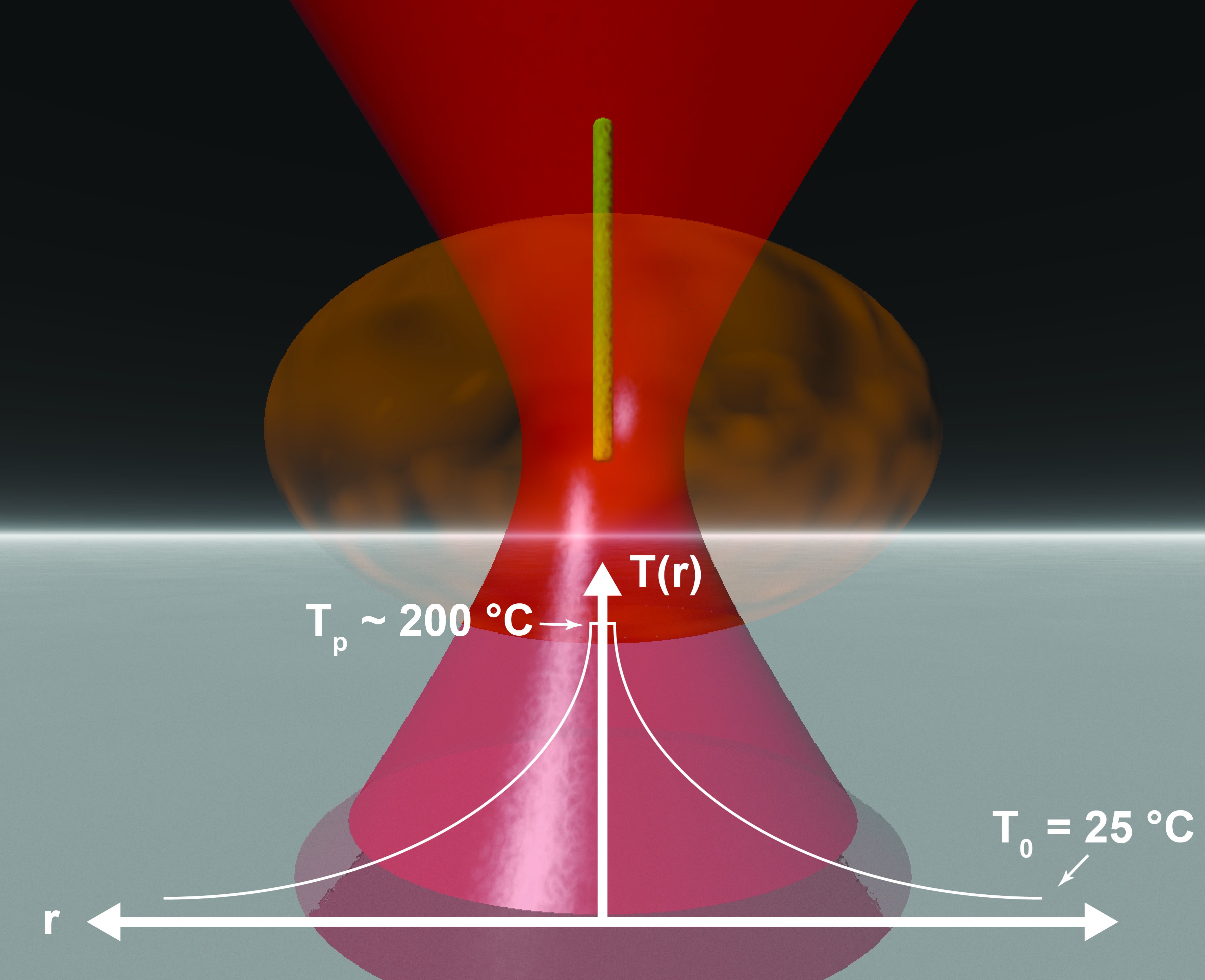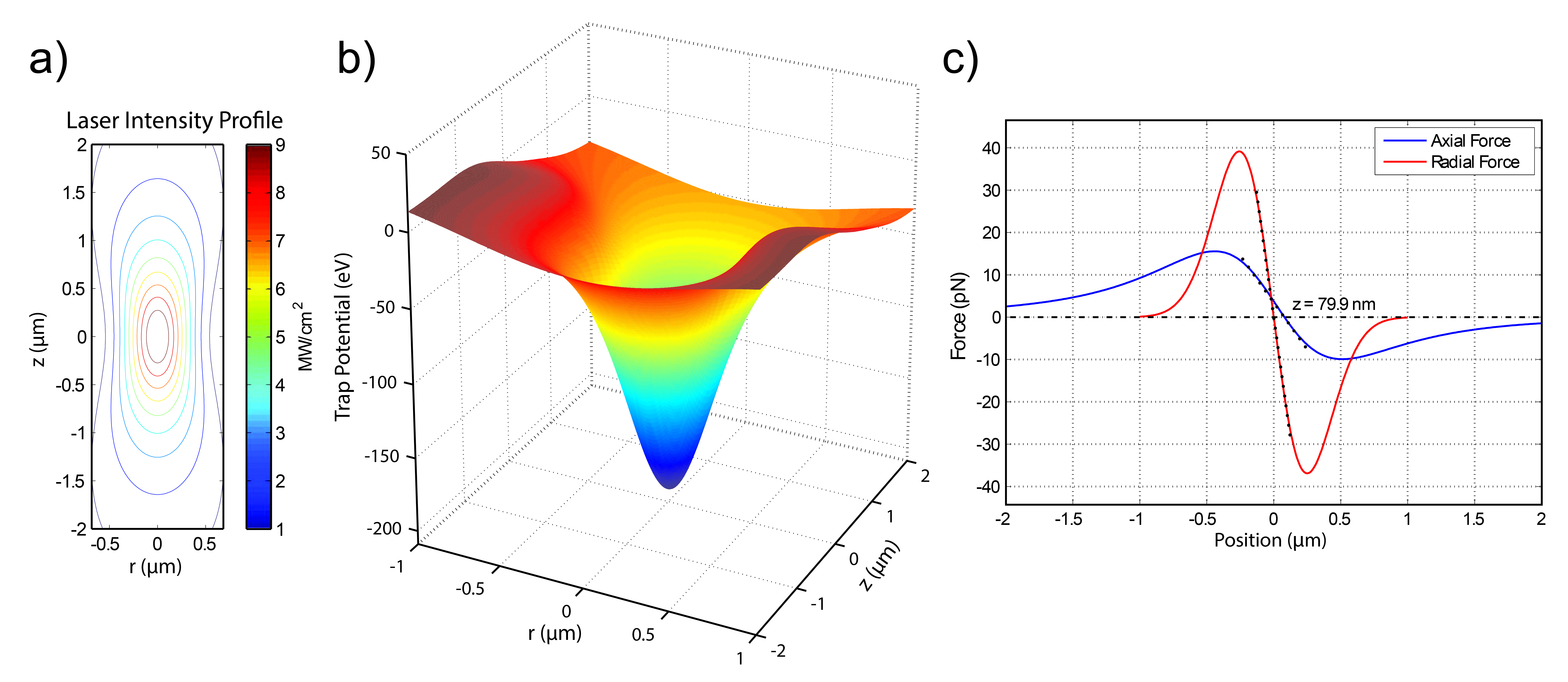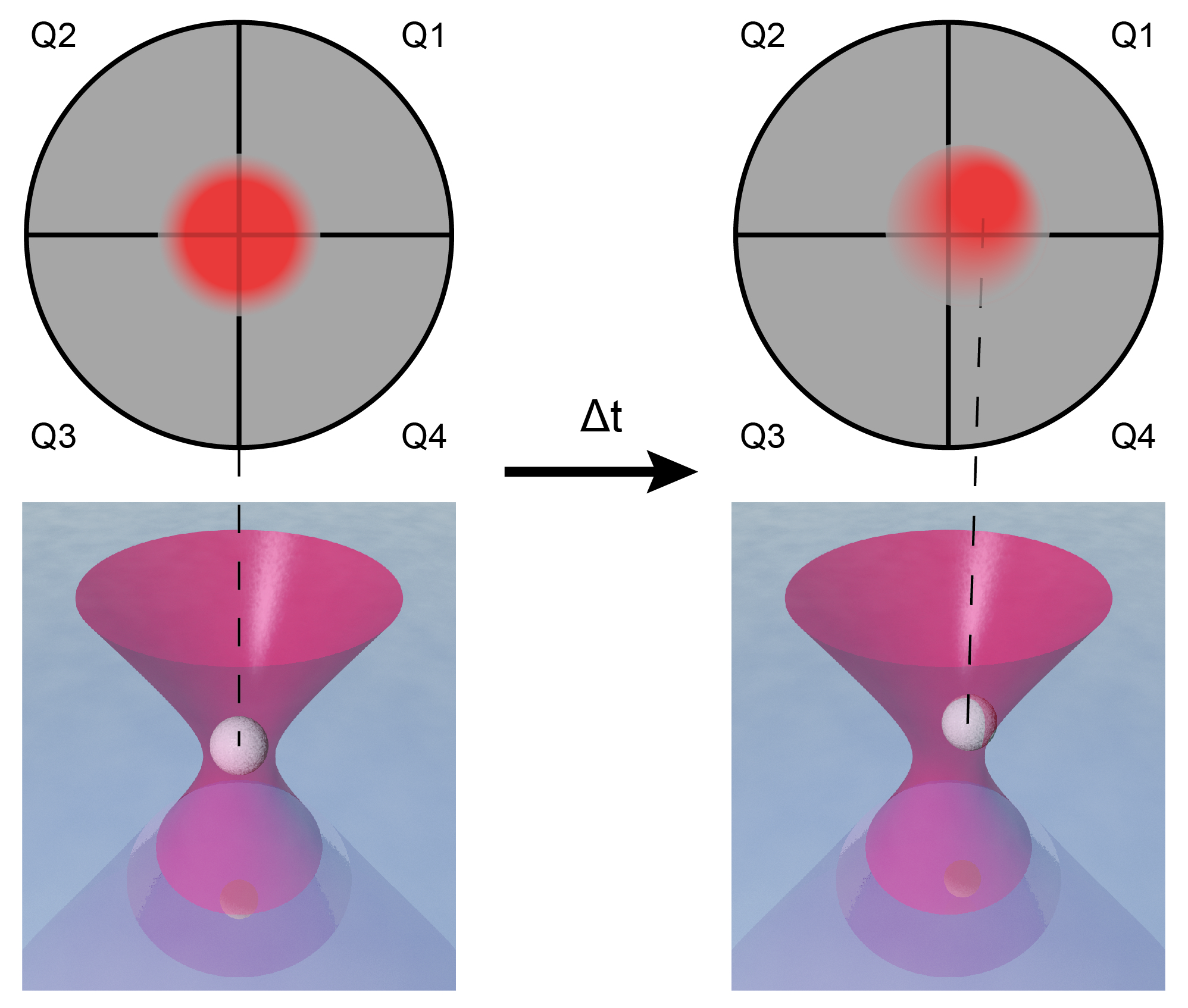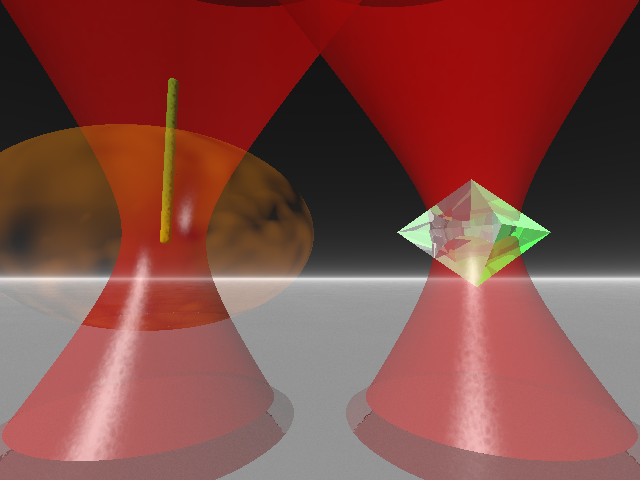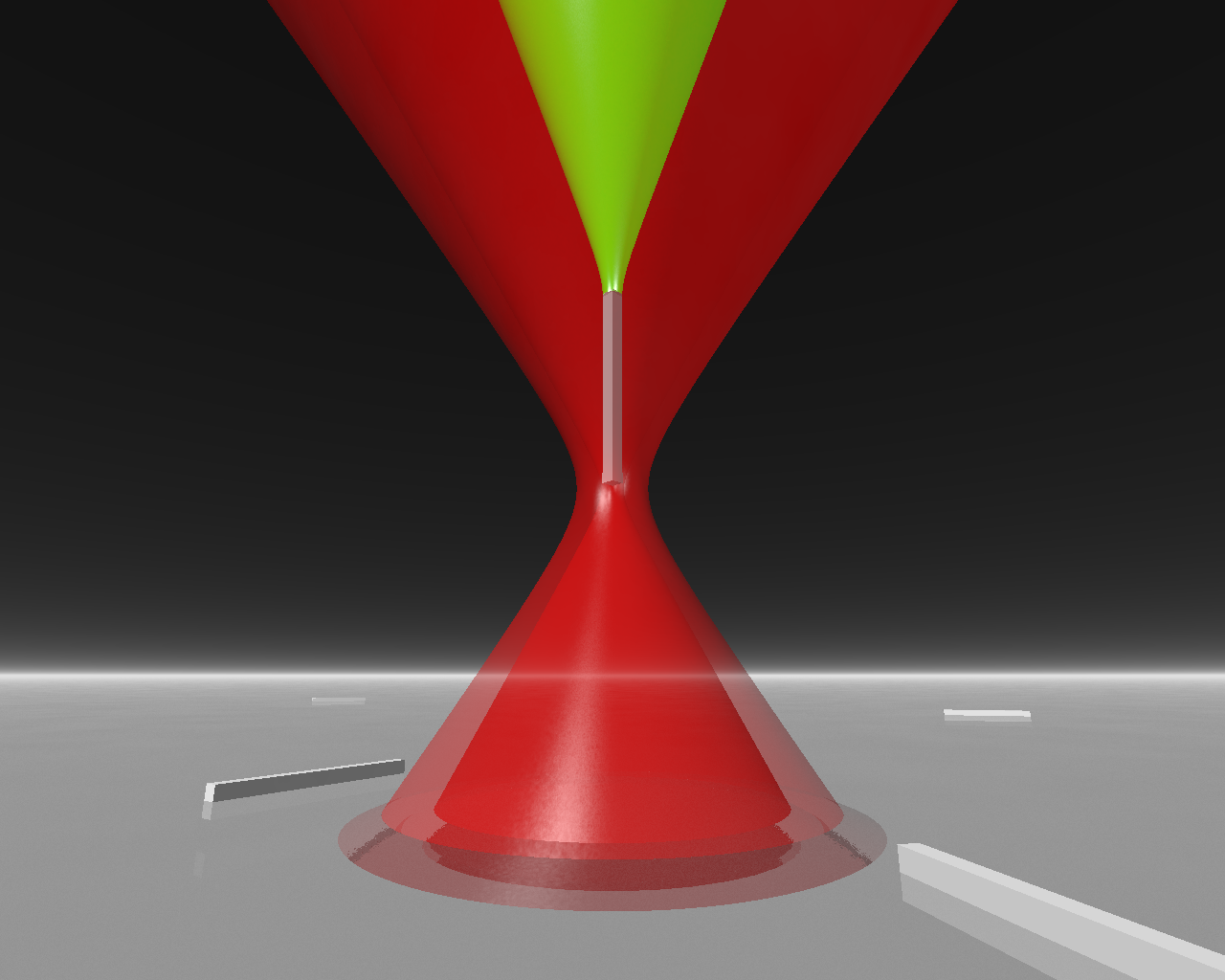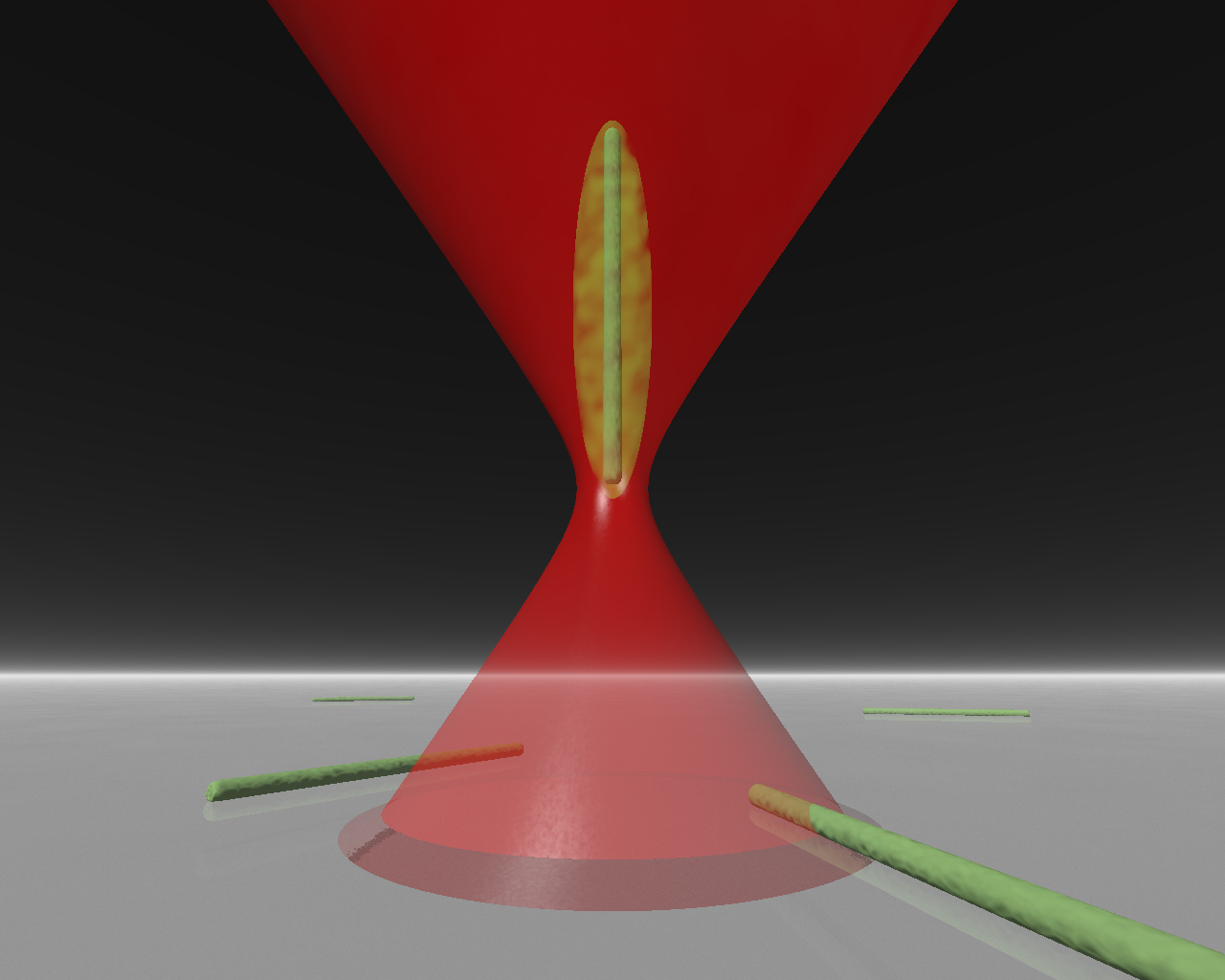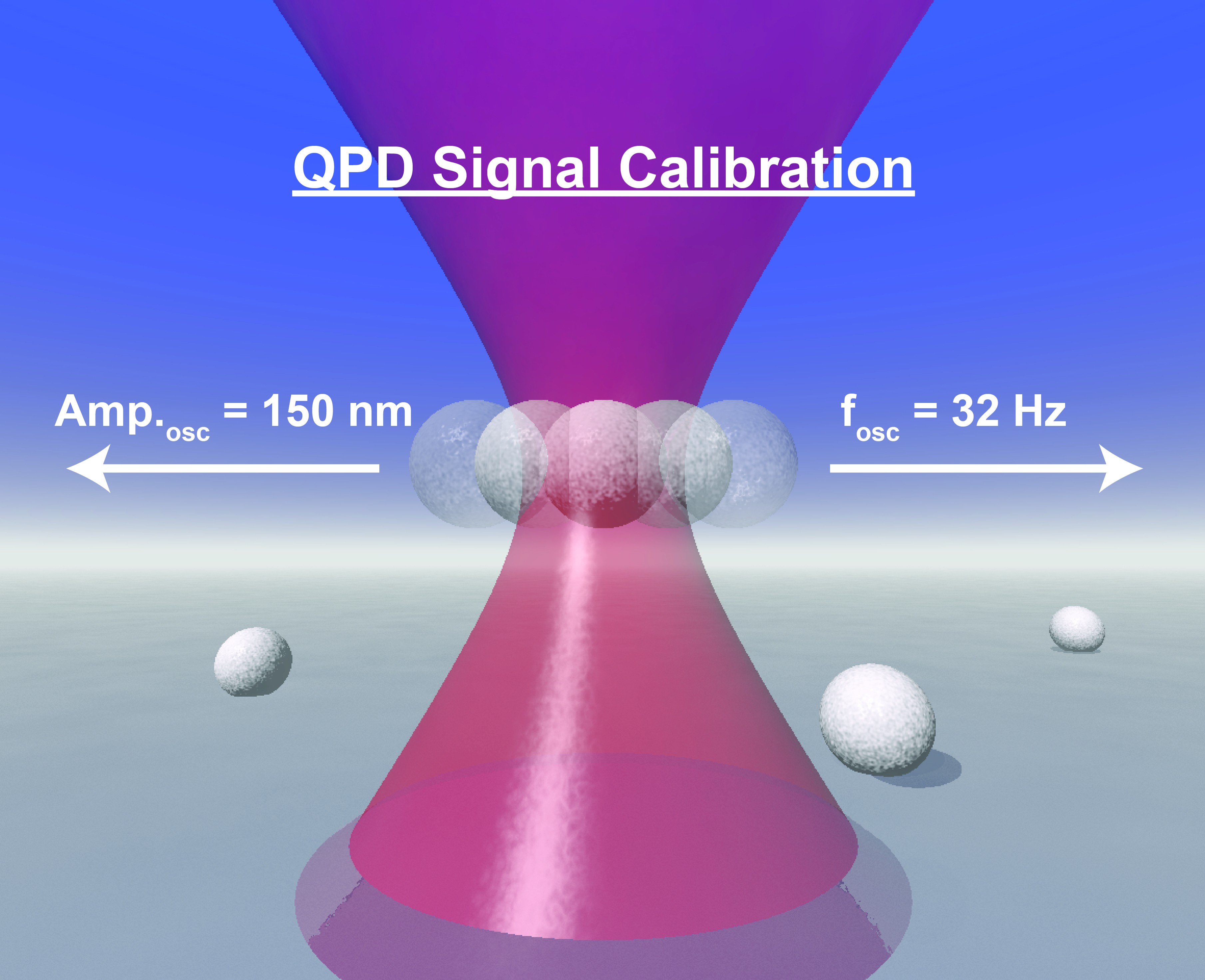Laser Tweezers
Project Summary
Light is massless, yet it carries momentum. What this means is that when light interacts with an object and is refracted/scattered/reflected, its momentum (think speed or direction of propagation) is changed. The change in momentum of the light is consequently imparted onto the interacting object as a force. Thus, it possible to move an object by shining light on that object. In fact, this idea has been proposed as a form of space propulsion (see: Solar sail).
However, the force imparted by a beam of light is generally very small; on the order of pico- to nano-Newtons. For reference, an average male (~180 lbs) experiences roughly 800 Newtons of gravitational force on Earth, or almost 1,000,000,000,000,000 times the force that light exerts on you. Still, the force exerted by light is large enough to affect the motion of small micro- and nanoparticles. In fact, when a laser is tightly focused to its diffraction limit, it is possible to trap micro- and nanoparticles in 3-dimensions at the focus. This is known as an optical trap, or laser tweezer.
In my previous research, we utilized a custom laser tweezer setup to trap nanoparticles that we have synthesized in the lab for various energy, medical, and optoelectronic applications. Furthermore, much of my research has been on developing methods for analyzing voltage data from a position sensitive light detector (quadrant photodiode, or QPD) to determine information about the trapped nanoparticle; including the nanoparticle size, shape, and temperature.
Related Media
Publications
A thorough summary of how laser tweezers work, its history, and an overview of my research/publications can be found in my PhD thesis.
Published
(* – Denotes co-first authorship)
- Zhou X, Smith B, Roder P, Pauzauskie P. “Laser Refrigeration of Ytterbium-Doped Sodium–Yttrium–Fluoride Nanowires.” Advanced Materials. 28 (39), 8658-8662, (2016).
- Roder P*, Smith B*, Zhou X*, Crane M, Pauzauskie P. “Laser Refrigeration of Hydrothermal Nanocrystals in Physiological Media.” PNAS (Proceedings of the National Academy of Sciences). 112 (49), 15024-15029, (2015).
- Roder P, et al. “Photothermal Superheating of Water with Ion-Implanted Silicon Nanowires.” Advanced Optical Materials. 3 (10), 1362-1367, (2015).
- Smith B, Roder P, et al. “Singlet-Oxygen Generation from Individual Semiconducting and Metallic Nanostructures during Near-Infrared Laser Trapping.” ACS Photonics. 2 (4), 559-564, (2015).
- Smith B*, Roder P*, et al. “Hot Brownian Thermometry and Cavity-Enhanced Harmonic Generation with Nonlinear Optical Nanowires.” Chemical Physics Letters. 639, 310-314, (2015).
- Roder P, Smith B, Davis EJ, Pauzauskie P. “Photothermal Heating of Nanowires.” The Journal of Physical Chemistry C. 118 (3), 1407-1416, (2014).
- Roder P, Pauzauskie P, Davis EJ. “Nanowire Heating by Optical Electromagnetic Irradiation.” Langmuir. 28 (46), 16177-16185, (2012).
Acquired Skills
Laser & Optical Setups
Integrating Multiple Lasers and Diodes
Laser Processing of Materials
Interfacing Optical Setups and Detectors
Custom Single Particle Spectroscopy Setups
Tunable Laser Alignment, Interface, & Setup
Materials Characterization
Custom-Built MicroRaman
Single Particle Photoluminescence
UV-Vis Spectroscopy
Simulations & Modelling
Optically-Induced Heat Generation (FDTD, FEA, DDA)
Time-dependent CW & Pulsed Fields In Nanostructures
Programming & Analysis
GUI Development/Hardware Integration
Signal/Data/Image Processing & Analysis

